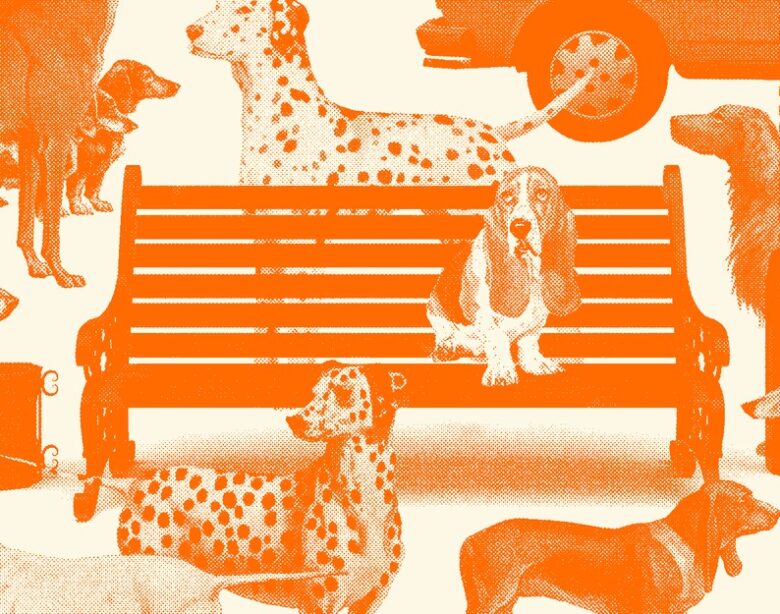[ad_1]
This is the Time-Travel Thursday edition, a journey through. atlantic oceanA storehouse to contextualize the present and reveal its delightful treasures. Register here
“Dogs are so numerous in New York, in fact, that they have become a nuisance,” journalist Charles Dawson Shanly wrote in atlantic ocean In 1872 he was annoyed by “There’s a lot of barking…and a lot of it.” Other New Yorkers It is feared that dogs roaming around on the road will “Hazardous to health” (a reasonable concern Considering the risk of rabies at the time), Shanlee eventually wrote: Anxiety increased to the point where “The weak began to view Ponto’s kennel in the backyard as a Pandora’s box of ailments too numerous to think about without fear.”
About 150 years later, the city’s dog population was rabies freeAnd you’re unlikely to see any stray dogs running around. But New Yorkers haven’t stopped complaining. “Sorry, dog lovers. There are too many of you.” Chloë Sevigny tell Rolling Stone in january– “Why Does Everyone Hate My Dog?” Writer for new york magazine I wondered at the beginning of this year.–
Dogs are everywhere in New York. They play, walk, and poop on the same streets and parks. that everyone likes Just as they have for centuries. Today, sometimes they even Eat in the same restaurant (Whether it’s allowed or not) Sharing public places with dogs may seem easy enough. But in a densely populated city Space may feel like zero. Perhaps inevitably, some people wonder: Why do dogs have so much power over them?
Back in Shanly’s day, New Yorkers weren’t too worried about their pet dogs. But they are very worried about stray dogs around. mid 19th centuryAuthorities have devised a brutal method to deal with them: Police will seize unattended dogs. and carried them to the newly created pound. And if no one claims it They would drown the whole herd at once. “The moaning that (the dog) made was pitiful to hear,” Shanlee wrote after witnessing the drowning.
For some, violence is considered a necessary evil. Humans and dogs are truly ferocious. cannot Live together safely “It would be better for them to do so than for our worthy citizens to live in fear of being bitten,” it read. In the year 1855 new york times article– but while the drowning continued Early animal rights activists came out to protest And at the end of the century The New York pound was also replaced. The beginning of the shelter system (Although it’s been decades since was also killed Most of the dogs they take in)
When the stray dog problem is more under control Anti-dog interest then shifted to pet dogs. specifically to their feces. Dirty roads Signs from the late 1930s encouraged owners to do this. control their dog– The hope is that trash on the curb will flow more easily into gutters. Instead of making the sidewalk dirty
But the city wasn’t clean enough. In the 1970s, a new movement emerged. By pushing for a law that would require owners to clean up their dog’s feces. As writer Kelly Conaboy reports in atlantic ocean A year ago, some wondered if movement leader Fran Lee hoped that would ultimately be the case. Dogs are completely banned from entering the city.Even though she denies the demands. (Lee’s rage against animals was not limited to dogs. In 1974, she complained that atlantic ocean About litter: “Pigeons are dirty, dirty, dirty animals,” she told reporters. “And every single one of them should be removed.”) The city has never banned dogs. But it is a law that requires owners to adopt dogs. The dog died in 1978.
Scooping is common these days. There were a few skirmishes involving violators. (Which the Department of Sanitation has pledged to crack down on by 2022, although enforcement remains minimal.) But the current debate about urban dogs is largely over where they go to the bathroom: Should dogs be able to Can I play in the park with children? What if They’re liberating.Or will it be a sports stadium built specifically for children? Do people need to bring their pets with them? everywhere–
In some communities, dogs can feel like gentrification—both a testament to the changes taking place in neighborhoods and another force to exhaust limited resources. They may not be the physical threat they once were. But when there is no real danger Attitudes also became more polarized. Dog lovers have probably never been more dedicated. They view dogs as members of the family. and push the limits of where their beloved pets can go. Meanwhile The people on the other side were barking, moulting, and licking a lot as usual. Sometimes they are in places where they have never been before. The next frontier in the dog wars may be finding ways to not just coexist. But also do it happily.
[ad_2]
Source link



